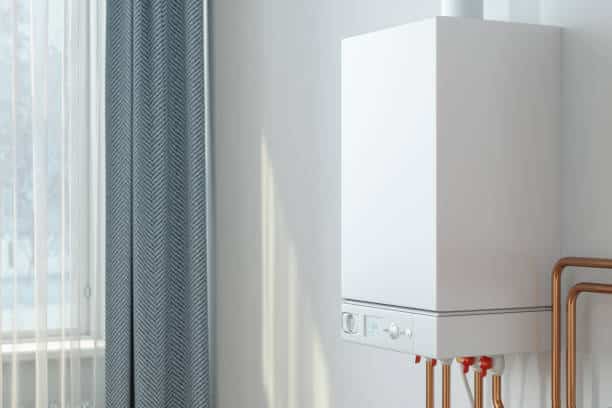As summer temperatures continue to rise, finding ways to keep your home cool becomes even more important. One area that often gets overlooked is the roof.
A hot roof can lead to higher energy bills and discomfort in your home. Luckily, there are simple ways to cool your roof in less time.
Table of contents
How to Cool Roof
Here are ten ways to get you started:
1. Install a Cool Roof
One of the most effective ways to cool your roof is by installing a cool roof. Cool roofs are made of materials that reflect more sunlight and absorb less heat than traditional roofs. This means they stay cooler and keep your home cooler too. Some common cool roof materials include white or light-colored coatings, tiles, shingles, or metal.
2. Add Insulation
If your roof is not already insulated, adding insulation can help keep your home cooler. Insulation helps to reduce heat transfer from the roof to the interior of your home. This means your air conditioning system won’t have to work as hard to keep your home cool.
3. Install Attic Ventilation
Proper attic ventilation is key to keeping your roof and home cool. Attic ventilation helps to remove hot air from your attic, which can reduce heat buildup on your roof. You can install vents in your roof or add a ventilation fan to help circulate air.
4. Use a Roof Coating
A roof coating can help to reflect sunlight and reduce heat absorption. Roof coatings can be applied to a variety of roofing materials and come in a range of colors. A reflective coating can help to reduce roof temperatures by up to 50 degrees Fahrenheit.
See: How to Build a Rock Garden
5. Plant Trees
Planting trees around your home can provide shade and reduce the amount of sunlight that hits your roof. This can help to keep your roof and home cooler. Trees can also help to improve air quality and provide other environmental benefits.
6. Install Roof Shingles
Roof shingles come in a variety of materials, including asphalt, wood, and slate. Some shingles are designed to reflect sunlight and reduce heat absorption. Consider installing shingles with a high solar reflectance rating to help keep your roof and home cooler.
7. Use a Radiant Barrier
A radiant barrier is a reflective material that is installed under the roof. It helps to reflect sunlight and reduce heat absorption. Radiant barriers can be installed on top of attic insulation to help keep your home cooler.
8. Install a Roof Fan
A roof fan can help to circulate air and reduce heat buildup on your roof. Roof fans can be installed in your attic or on your roof. Some roof fans are solar-powered, which can help to reduce energy costs.
Read: What are the Parts of an Air Conditioner
9. Seal Leaks
If your roof has leaks, it can lead to heat buildup and higher energy bills. Make sure to seal any leaks in your roof to prevent hot air from entering your home.
10. Install Shade Screens
Shade screens are installed on the exterior of your home and can help to block sunlight and reduce heat absorption. Shade screens can be made of a variety of materials, including mesh or fabric.
In conclusion, keeping your roof cool is important for reducing energy costs and keeping your home comfortable. By following these ten simple tips, you can cool your roof in less time and enjoy a more comfortable home this summer.
FAQS
There are several ways to make your roof cool, and the best approach for you will depend on your specific roof type, budget, and climate. Here are some general tips:
Choose light-colored roofing materials: Light-colored roofs reflect sunlight away from your home, reducing the amount of heat that is absorbed. This can help to lower your energy bills and keep your home cooler.
Install a radiant barrier: A radiant barrier is a reflective sheet that is installed under your roof sheathing. It helps to reflect heat away from your attic, keeping your home cooler and reducing the strain on your air conditioning system.
Add attic insulation: Proper attic insulation helps to prevent heat from entering your home through the roof. Aim for at least R-38 insulation in your attic.
Consider a cool roof coating: Cool roof coatings can be applied to existing roofs to improve their reflectivity. This is a good option if you don’t want to replace your entire roof.
Plant shade trees around your home: Shade trees can provide significant cooling benefits by blocking sunlight from hitting your roof.
Reducing heat gain on your roof is essential for keeping your home cool and energy-efficient. Here are some specific tips:
Avoid dark-colored roofing materials: Dark-colored roofs absorb sunlight, which can lead to increased heat gain in your home.
Seal any air leaks around your roof: Air leaks can allow hot air to enter your attic and increase heat gain. Seal any gaps or cracks around your roof vents, pipes, and chimneys.
Install attic vents: Attic vents help to circulate air in your attic and remove hot air. Proper ventilation can help to reduce heat gain and keep your attic cooler.
Use low-emissivity (low-E) windows: Low-E windows reflect heat away from your home, reducing heat gain.
The cool roof strategy is a set of guidelines for designing and constructing roofs that reflect sunlight and reduce heat gain. Cool roofs can help to lower energy bills, improve indoor comfort, and reduce the urban heat island effect.
Here are some of the key principles of the cool roof strategy:
Use light-colored roofing materials: Light-colored roofs reflect sunlight away from your home, reducing the amount of heat that is absorbed.
Increase roof reflectivity: Use roofing materials with a high solar reflectance index (SRI). The SRI is a measure of a roofing material’s ability to reflect sunlight.
Consider roof geometry: Design your roof to minimize the amount of direct sunlight that it receives. This may involve using overhangs, awnings, or other shading elements.
Combine cool roof strategies: Use multiple cool roof strategies to achieve maximum cooling benefits.
If you have a room in your attic, it can be particularly hot during the summer months. Here are some tips for reducing the heat in your roof room:
Install a ceiling fan: A ceiling fan can help to circulate air in your roof room and make it feel cooler.
Insulate the walls and ceiling of your roof room: Proper insulation will help to prevent heat from entering your roof room in the first place.
Consider installing window awnings or shades: Window awnings and shades can block sunlight from hitting your windows and reduce heat gain in your roof room.
Open windows at night to let cool air in: If the temperature drops at night, open windows in your roof room to let in cool air.
Discover More
- How to Cancel FuboTV: Streamlined Guide for Subscription Freedom
- How Long Do Mice Live: Rodent Life Cycle Understanding
- How Long Does a Soccer Game Last: Sports Duration Understanding
- How to Reset Chromecast: Streaming Device Management
- How to Clean Crocs: Footwear Maintenance Method




